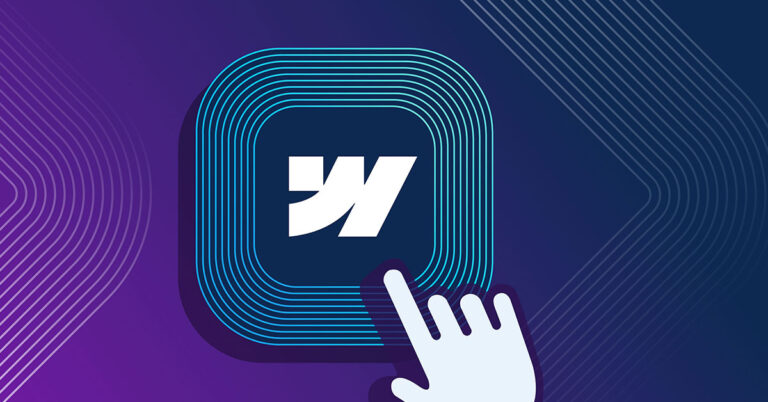How often do you find yourself Googling “b2b digital marketing trends”? Or asking ChatGPT “ways to engage a B2B audience”? With luck, you’ll get some interesting results, maybe a winner or two.
That’s why we rounded up some of our favorite B2B marketing experts to answer a hefty list of registrant questions from our August Coffee Break. While we weren’t able to tell you how much screen time your kids should be getting or how to improve your investment portfolio, we were able to answer questions about intent data, AI, demand gen, and more.
Here’s Part 1 of our 2023 Ask Marketers Anything recap, where we answer five questions about identifying and reaching your B2B audience.
1. How are you utilizing AI to enhance your marketing output?
The evolution of AI in sales and marketing is still in its early stages, but its potential for innovation is impressive. AI, especially generative AI, excels at synthesizing large volumes of information, which enables humans to spend their time better—in this case, reviewing, optimizing and making recommendations based on the results. By simplifying complex information, AI provides a strong starting point for data-informed content creation.
Iron Horse Founder and CEO, Uzair Dada describes a time we helped a client conduct a survey to discern their target audience’s primary concerns. While most surveys use multiple-choice questions because they’re easier to analyze, we wanted to tap into the deep insights offered by open-ended answers. Reading through hundreds of these kinds of answers just isn’t efficient. Generative AI, however, was able to synthesize these almost instantly. Our team uncovered valuable feedback the client hadn’t anticipated, which ended up reshaping their content and messaging strategy.
However, Uzair reminds us that output delivered by AI must always be reviewed and augmented by a human. That’s where AI will shine most in marketing—when leveraged as a tool in combination with the intuition, skill and experience of the marketers wielding it.
2. How can you scale an ABM outreach channel with a very specific target audience?
Senior Director of Growth Marketing Maria Gianotti recommends starting by evaluating the performance of your demand generation programs. Opt for the ones that yield the best results for your audience. By identifying the most potent content and messaging for your campaigns, you can more easily determine which channels to expand and how to budget for them to achieve your KPIs.
Two metrics in particular allow you to make informed decisions about where to allocate additional resources to maximize your ROI:
Conversion metrics. Such as campaign content downloads and the ratio of webinar registrations to attendees.
Advertising metrics. Such as the efficacy of ads in reaching target accounts and the success rate of specific ad messaging and creatives.
Then begin scaling one channel at a time. Monitor engagement on a weekly basis before fully committing to a particular channel.
Scaling content syndication campaigns.
If you‘re using a content syndication channel and have already identified a specific target audience, you don’t really need additional criteria as long as your audience segment is well-defined. If you only have company names, most content syndication channels allow you to incorporate specific persona data. This can be refined further by job function and role. While this doesn’t guarantee exclusive marketing to these contacts, they will be prioritized.
See how Iron Horse used content syndication as part of an ABM fast start program to help a national financial services firm expand into a new market faster.
3. What’s the most common mistake B2B marketers make when trying to reach their target audiences, and how can it be avoided?
Chief Growth Officer Monica Behncke refers to one mistake as the “everything bagel” approach: Wanting to showcase every product or service to every potential client simultaneously. This usually occurs when multiple stakeholders, each with their unique perspective and agenda, provide input. What begins as a targeted strategy quickly becomes overly broad. But how can you avoid this?
First. It’s essential to collaborate with sales and marketing to strategize on covering all audiences and portfolio solutions through a sequence of campaigns, instead of cramming it all into one. That’s the first point.
Second. Clearly define who you’re targeting. The key is precision. A common, and somewhat clichéd response, from many clients when asked about their target audience is “the global 2000.” This generalized approach indicates a lack of due diligence.
Third. Begin with your audience’s needs rather than starting with your product. Adopting an audience-centric approach from the onset is crucial. If you only consider product features as their needs, you’re missing the bigger picture. Once you’ve defined who they are and what their unique needs are, you can craft relevant conversations and develop fitting assets.
Find five more solutions to common integrated marketing mistakes here.
4. What are the best ways to use intent data?
Intent data allows us to fine-tune our target audience, focusing on those more receptive to our message—and ultimately leading to cost savings on demand gen campaigns as you’re only targeting in-market companies and providing much more qualified leads to your sales team.
Hannah Swanson, Director of Marketing Engagement at Intentsify, recommends starting with intent data for target account list development and refined messaging and content selection. With these foundations set, you can then launch demand generation activities, such as display advertising or content syndication. As these initiatives progress, monitor their performance. Assess which strategies are working and identify potential accounts that are showing interest, which might not have been on your radar previously.
A more advanced application might be for churn reduction or gaining competitive intelligence. However, if you’re new to intent data, don’t rush to deploy all these use cases simultaneously. Just like Monica advised in question 3, test in stages and scale accordingly.
5. What is a hack or useful tool you can use to surface insights that impact how you market to specific personas?
Alex Barca, Director of Demand Generation at Postal, describes a tool they’re using called UserGems. It’s a platform that scans data from your CRM and LinkedIn to identify job changes, pinpointing individuals who were previously affiliated with your customers and have now joined other prospect companies. Imagine how powerful it could be to skip the spray and pray campaigns and start engaging directly with someone who was previously already a champion for your product or service.
Senior Global Demand Gen Manager Ottavio Dattolo, also brings up Persona Sheets that Drift employs. They’re able to analyze closed deals within a CRM to pinpoint the typical titles of those integral to purchasing decisions. This data then informs and creates the persona sheets that provide a detailed overview of buying personas, capturing their characteristics and specific pain points. Marketing and sales teams can use these much better informed profiles to ensure that their messaging is tailored and resonant.
The Iron Horse insight.
No matter what you’re doing, whether scaling engagement channels or deploying new marketing technologies, one recommendation endures: the importance of purposeful experimentation before full-scale implementation.
By focusing on smaller, segmented campaigns or tools first, marketers can gather crucial insights, measure success more precisely, and refine strategies for better efficacy. Only after a thorough evaluation and identification of successful tactics should marketers start scaling up. This iterative approach not only minimizes risks but also ensures a more resource-efficient strategy that will deliver higher returns on investment.
For our experts’ answers to audience questions on ABM and demand gen, visit Part 2 of our 2023 Ask Marketers Anything recap. Find the original webinar recording and the rest of our Coffee Breaks in our Resource Center.



